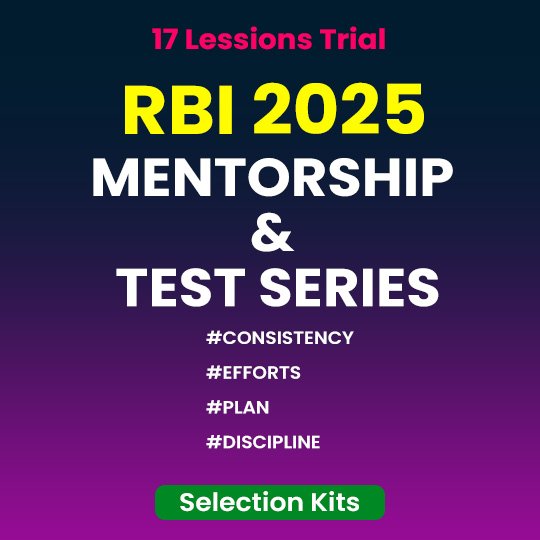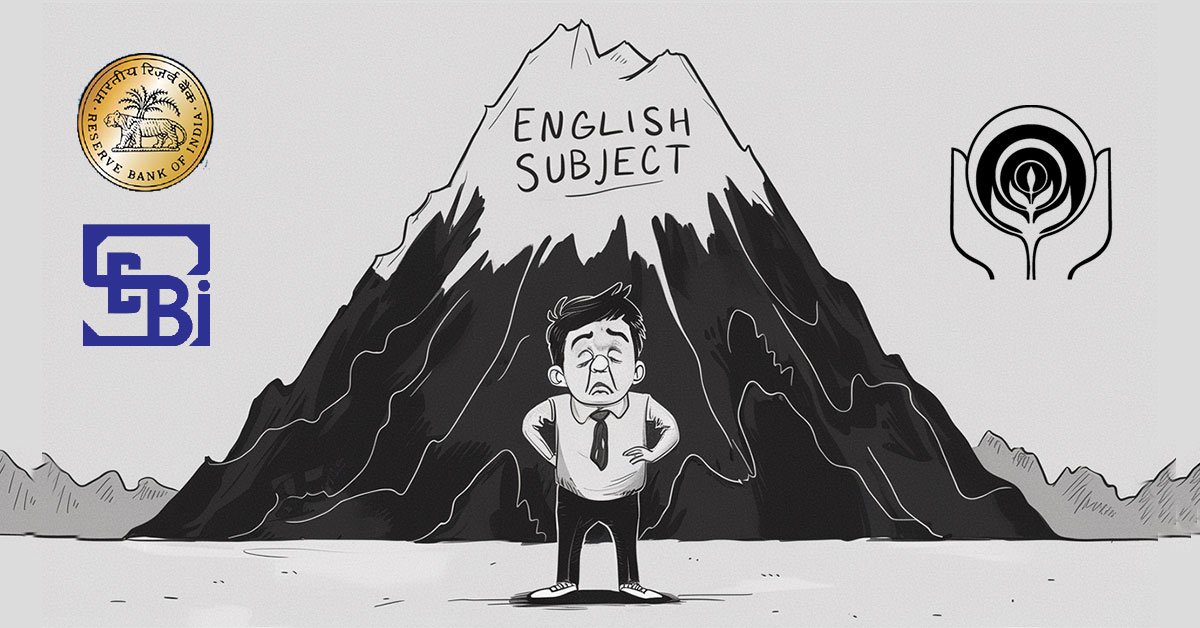Daily Current Affairs Quiz
29&30 June, 2025
International Affairs
1. World Bank Moves Pakistan, Afghanistan Out of South Asia Region
Context:
In a significant restructuring, the World Bank has shifted Pakistan and Afghanistan out of its South Asia administrative region, grouping them under the Middle East and North Africa (MENA) region. This move, while framed as a managerial alignment by the bank, comes at a time when India has raised serious concerns over international lending to Pakistan, citing its role in terrorism financing and misuse of aid.
Current Composition of World Bank’s South Asia Region
With this change, the South Asia region will now consist of only six countries:
- India
- Bangladesh
- Bhutan
- Maldives
- Nepal
- Sri Lanka
Pakistan and Afghanistan will now be grouped with MENA countries such as:
- Lebanon
- Syria
- Libya
- Yemen
- West Bank and Gaza
India’s Strategic Position
India has long opposed multilateral loans to Pakistan, particularly those from:
National Affairs
1. Bihar Launches e-Voting Facilities using Mobile Applications
Context:
In a historic development, Bihar became the first state in India where voters exercised their franchise via mobile phones during municipal bypolls and elections in six Nagar Panchayats, marking a significant leap toward digital democracy.
Key Features of Bihar’s E-Voting System
- App Used: E-SECBHR, developed by C-DAC (Centre for Development of Advanced Computing)
- Security Features:
- Blockchain technology
- Facial recognition and scanning
- Voter ID number verification
- Limit of two voters per mobile number
- Uses electronic voting machines (EVMs) or e-voting kiosks that:
- Record votes instantly
- Provide receipts
- Operate without internet connectivity, enhancing security and accessibility.
Advanced Technological Integration
- Blockchain Security: Ensures a tamper-proof record of votes and enhanced transparency.
- Biometric Authentication: Incorporates liveness detection and facial recognition for voter identity verification.
- Face Recognition System: Verifies voter authenticity at polling booths.
- Digital Locks: Secure the strong rooms for EVMs, preventing unauthorized access.
- OCR for Vote Counting: Optical Character Recognition (OCR) automates accurate and fast vote tallying and result generation.
TH
2. Mission Bonnet Macaque
Context:
In response to increasing human-wildlife conflict and agricultural losses, the Kerala Forest Department is preparing to launch a mass sterilisation programme targeting the bonnet macaque — a primate species endemic to South India.

Mission Bonnet Macaque
- The sterilisation initiative is part of a larger 10-point strategy to address human-animal conflict, named “Mission Bonnet Macaque.”
- The programme includes:
- Population control via sterilisation
- Eco-tourism waste management, especially where monkeys feed on human food leftovers.
Conservation Status
- The macaque is listed in Schedule I of the Wildlife Protection Act, requiring central permission for any such intervention.
- The bonnet macaque is categorised as “Vulnerable” by the International Union for Conservation of Nature (IUCN) due to its declining population.
- Population control measures must balance conservation priorities with conflict resolution.
3. NSO Launches GoIStats Mobile App
Context:
On Statistics Day 2025, the National Sample Survey Office (NSO), under the Ministry of Statistics and Programme Implementation (MoSPI), launched the GoIStats mobile application. This launch marks a major step in India’s data democratization journey, offering real-time access to official statistics in a mobile-first format and reinforcing NSO’s digital transformation efforts under the broader eSankhyiki initiative.
Features of GoIStats App
- Interactive Dashboard: “Key Trends” visualizing socio-economic indicators like GDP, inflation, employment
- Advanced Filtering & Search
- Comprehensive Metadata Access
- Mobile-Optimized Data Tables
- Seamless access to official statistics for researchers, policymakers, and citizens
Other Key Announcements on Statistics Day 2025
Publications Released:
- SDG National Indicator Framework (NIF) Progress Report 2025
- Data Snapshot on SDG-NIF Progress Report 2025
- SDG-NIF, 2025 (full report)
Highlights from SDG-NIF Report 2025:
- Social Protection Coverage:
Increased from 22% (2016) to 64.3% (2025) - Agriculture GVA per worker:
Rose from ₹61,247 (2015-16) to ₹94,110 (2024-25) - Rural Safe Drinking Water Access:
Improved from 94.57% (2015-16) to 99.62% (2024-25)
About Statistics Day
- Celebrated on: 29th June every year
- In honour of Prof. P.C. Mahalanobis, born on June 29
- Recognized for contributions to statistics and economic planning
4. National Turmeric Board Inaugurated in Nizamabad, Telangana
Context:
The Union Home Minister inaugurated the headquarters of the National Turmeric Board (NTB) in Nizamabad, Telangana, fulfilling a 40-year-old demand of turmeric farmers from the region.
About the National Turmeric Board
Type:
Specialized statutory body under the Ministry of Commerce and Industry
Headquarters:
Nizamabad, Telangana – known as the “Turmeric Capital of India”
Ministries Involved:
- Ministry of Commerce and Industry (nodal ministry)
- Coordination with Ministries of AYUSH, Agriculture, Pharmaceuticals, and Cooperation
Key Objectives
- Enhance value addition, branding, and marketing
- Boost exports of turmeric and GI-tagged products
- Eliminate middlemen to improve farmer income
- Create global awareness of turmeric’s medicinal benefits
- Improve logistics and quality compliance with international standards
- Provide training, research support, and skill development
Key Functions
- Develop end-to-end export infrastructure
- Promote organic and GI-tagged turmeric
- Ensure compliance with global food safety standards
- Coordinate with:
- Spices Board
- National Cooperative Exports Limited (NCEL) and related cooperatives
About Turmeric in India
Botanical Name: Curcuma longa
Common Names: Haldi, Golden Spice
Uses:
- Culinary, dyeing, medicinal, cosmetic, and Ayurvedic
Major Producing States:
- Telangana, Maharashtra, Meghalaya, Karnataka, Andhra Pradesh, Tamil Nadu
Climatic Requirements:
- Temperature: 20–30°C
- Rainfall: High rainfall areas
- Soil: Well-drained loamy soil
- Grown in both irrigated and rain-fed zones
5. Early Harappan Burial Discovery in Lakhapar, Gujarat
Location:
- Lakhapar village, Kutch district, Gujarat
- Excavation led by University of Kerala’s Department of Archaeology
Time Period:
- 3300–2600 BCE (Early Harappan Phase)
Key Discoveries
- Unique Human Burial:
- No architectural markers
- Burial directly in a pit
- Earliest known burial in Gujarat featuring Pre-Prabhas pottery
- Pre-Prabhas Pottery:
- Associated with Chalcolithic Saurashtra cultures (e.g., Prabhas Patan, Datrana)
- Indicates cross-cultural interactions
- Harappan-style Architecture:
- Use of sandstone and shale
- Evidence of planned construction and social organization
- Habitation Layers & Ceramics:
- Similarities with Early Harappan sites in Sindh
- Indicates trans-regional cultural exchange
Archaeological Context
- Nearby Juna Khatiya site: Contains 197 Early Harappan burials
- Together, Lakhapar + Juna Khatiya suggest a large Early Harappan network in Gujarat
Significance of the Discovery:
- Expands Harappan Geography:
- Shows Harappan influence deep into Western India
- Links Chalcolithic and Harappan Cultures:
- Through Pre-Prabhas ceramics and burial practices
- Challenges Linear Historical Models:
- Indicates coexistence of foragers, agro-pastoralists, and proto-urban societies
- Fills Gaps in Harappan Burial Data:
- Most existing data are from Mature Harappan phase
- This adds rare early insights into funerary practices
- Strengthens Cultural Chronology:
- Reinforces Gujarat’s role as a cultural bridge between Sindh and peninsular India
Banking/Finance
1. Bank Credit Growth Remains Tepid Despite RBI Rate Cuts
Context:
Despite a 100 basis points (bps) cut in the policy repo rate by the Reserve Bank of India (RBI) between February and June 2025, banks have maintained their credit growth guidance at 11–13% and deposit growth at 9–10% for FY26. This mirrors the trend observed in FY25 and indicates continued subdued demand and liquidity pressures.
Key Highlights:
Current Growth Projections Unchanged
- Banks are not revising loan or deposit growth guidance due to:
- Weak Q1 credit demand
- Challenges in retail deposit mobilisation
- Market uncertainties
CRR Reduction and Festival Demand Awaited
- The CRR cut (in four phases from September to November) and festival season are expected to stimulate demand.
- A State Bank of India (SBI) report estimates that CRR cuts could unlock resources supporting 1.4–1.5% additional credit growth.
Finance Ministry Pushes for Loan Expansion:
- In a recent meeting, the Ministry of Finance urged PSBs to enhance credit flow post-rate cuts.
- Despite policy easing, loan offtake remains soft, particularly for:
- Unsecured personal loans
- Mortgages
- NBFC lending, where banks are cautious
Microfinance and Liquidity Outlook
- Stress in the microfinance sector may begin to ease by September, aiding credit recovery.
- RBI’s policy actions have created a liquidity surplus, but transmission to credit growth is uneven.
2. SBI to Launch ‘Only Yono’
Context:
The State Bank of India (SBI), India’s largest public sector bank, is set to embark on a major digital transformation in FY26, headlined by the launch of a next-generation version of its flagship mobile banking app — ‘Only Yono’. The transformation strategy encompasses AI integration, multilingual customer engagement, and digitization across banking verticals.
Key Features of ‘Only Yono‘ App
- Hyper-personalised user journeys for seamless navigation and offers.
- Biometric login support for enhanced security.
- Multilingual interface to broaden accessibility across regions.
- Focus on paperless banking through:
- Video KYC for sole proprietorship account openings.
- Facial recognition in kiosk banking to boost rural and semi-urban inclusion.
Rural and Agri-Focused Digital Expansion
- Digital Kisan Credit Card (KCC) journey to be expanded to five more states, enhancing credit access for farmers.
- Revamp of Agri Loan Management System to streamline agricultural lending.
Branch and Self-Service Tech Upgrades
- Deployment of 3,000+ Swayam kiosks for automated passbook printing.
AI-Powered Customer Engagement
- A marketing technology platform integrated across SMS, WhatsApp, and email to go live by October 2025.
Advanced Data Infrastructure
- Development of a real-time analytics platform (Data Lakehouse) by September 2026.
- Will centralize decision-making data across business verticals.
Trade Finance & MSME Digital Push
- Revamp of trade finance operations with new digital modules.
- Export and import modules for trade finance went live in April 2025.
- Upgrades aimed at streamlining MSME and cross-border banking processes.
3. SEBI Imposes ₹25 Lakh Penalty on BSE for Regulatory Lapses
Context:
The Securities and Exchange Board of India (SEBI) has penalized BSE Limited ₹25 lakh for multiple regulatory violations identified during a detailed inspection.
Key Highlights
- Penalty Amount: ₹25 lakh
- Regulatory Body: SEBI (Securities and Exchange Board of India)
- Entity Penalized: Bombay Stock Exchange (BSE) Limited
- Inspection Period: February 2021 to September 2022
- Deadline for Payment: BSE must pay the penalty within 45 days of receiving the SEBI order.
Major Violations Identified by SEBI
- Premature Access to Price-Sensitive Information:
SEBI found that BSE’s system architecture allowed both:- Its internal Listing Compliance Monitoring (LCM) team, and
- Paid subscribers
to access corporate announcements before they were made public on the BSE website.
- Weak Supervision of Broker Trades:
Inadequate surveillance and enforcement of trading rules. - Delayed Regulatory Action:
Laxity in initiating timely enforcement action on violations.
About BSE
- Full Name: Bombay Stock Exchange
- Established: 1875
- Headquarters: Mumbai, Maharashtra
- Distinction: Oldest stock exchange in Asia
4. Goa’s Instifi Receives RBI Authorization as Payment Aggregator
Context:
Instifi, a fintech startup based in Goa, has received final authorization from the Reserve Bank of India (RBI) to operate as a licensed payment aggregator (PA) under the Payment and Settlement Systems Act, 2007. This makes Instifi the first and only RBI-authorized payment aggregator headquartered in Goa.
About Instifi
- Founded by: Mohit Aggarwal
- Core Services:
- Card processing (credit/debit)
- UPI integration
- Net banking
- Virtual accounts
RBI’s Regulatory Framework
- Under the Payment and Settlement Systems Act, 2007, non-bank PAs must obtain formal RBI authorization.
- Instifi is now included in RBI’s official list of authorized entities eligible to process sensitive financial transactions.
Agriculture
1. Ease of Doing Business in Agroforestry
Context:
The Union ministry of environment, forest and climate change has issued model rules for felling trees in agricultural land, aiming to boost exports of wood-based products. The objective is to promote ease of doing business in agroforestry, boost domestic timber production, and support wood-based exports by simplifying rules for tree felling on farmland.
Key Highlights of the Model Rules
Purpose and Vision:
- Encourage tree-based farming to:
- Reduce timber imports
- Double farmers’ income
- Support domestic wood-based industries
- Enhance agroforestry exports
- Promote sustainable land use models
Simplified Regulatory Framework:
- Agroforestry land registration
- Online tree harvesting permissions
- Traceability via geotagging and updates
Use of Digital Portal:
- Introduction of National Timber Management System (NTMS) portal
- Farmers must:
- Register plantations with details: land ownership, species, location, and planting year
- Upload geotagged photos and update data regularly
Tree Felling Application & Verification:
- Applications for tree felling can be submitted online via NTMS
- Empanelled verifying agencies will inspect sites
- Based on reports, tree felling permits will be issued for agricultural lands
Monitoring Mechanism:
- Divisional Forest Officers (DFOs) to supervise agencies
- State-level committees, under Wood-Based Industries Guidelines (2016), will guide:
- Agroforestry promotion
- Timber harvesting regulation
- Timber transit policies
Implementation & Appeal to States
- MoEFCC urges States/UTs to adopt model rules
- Goal: Incentivize farmers, remove bureaucratic hurdles, and integrate trees into farming systems
Science & Tech
1. Ammonium Sulphate Identified as Major Contributor to PM2.5 Pollution in India: CREA Report
Context:
A recent study by the Centre for Research on Energy and Clean Air (CREA) has revealed that secondary pollutants, especially ammonium sulphate, are responsible for nearly one-third of India’s PM2.5 pollution. These findings come amid concerns about rising air pollution and limited implementation of emission control systems in the country.
What Are Secondary Pollutants?
- Primary pollutants come directly from sources like automobiles, coal plants, and burning of organic matter.
- In the atmosphere, these react with other gases (e.g., water vapour, ammonia) to form secondary pollutants, which are more complex and often more harmful.
Ammonium Sulphate’s Contribution
- Formed by the reaction between sulphur dioxide (SO₂) and ammonia (NH₃) in the atmosphere.
- Average national concentration: 11.9 µg/m³.
- PM2.5 contribution: Accounts for 34% of PM2.5 mass on average across India.
Key Sources:
- Coal-fired thermal power plants contribute over 60% of SO₂ emissions, the main driver of ammonium sulphate.
- Despite a mandate, only 8% of thermal plants have installed flue gas desulphurisation (FGD) units.
- The government is reportedly considering removing the FGD requirement, raising alarm among environmental researchers.
Recommendations from CREA
- Mandatory and timely implementation of FGD systems in coal plants.
- Efficient fertilizer use to control ammonia emissions.
- Strict enforcement of emission norms across all polluting sectors.
- A combination of source-specific interventions and regulatory compliance is essential for sustainable air quality improvement.
2. Green Chemistry
Context:
As global concerns about environmental degradation intensify, green chemistry has emerged as a key scientific and industrial response. It aims to reduce or eliminate hazardous substances from chemical processes while promoting sustainability, safety, and efficiency.
What is Green Chemistry?
- Green chemistry refers to the design of chemical products and processes that reduce or eliminate the use and generation of hazardous substances.
- It aligns with the broader goals of sustainability and eco-friendly development.
Origin
- Introduced by Paul Anastas and John Warner in 1998, the 12 Principles of Green Chemistry emphasize:
- Use of safer solvents and reagents
- Energy-efficient reactions
- Design of non-toxic products
- Waste prevention at the source
- Maximization of atom economy
Key Examples and Applications
Biodiesel Production – A Green Fuel Mission
- Indian Oil Corporation uses non-edible Jatropha seeds (30% oil content) for biodiesel production.
- The transesterification process involves reacting seed oil with methanol (ideally from biomass) to yield:
- Biodiesel (main product)
- Glycerol (by-product, used in cosmetics, polymers, etc.)
- Catalyst Used:
- Traditional: Sodium hydroxide – generates wastewater
- Greener alternative: Calcium oxide (solid) – 95% recoverable, less waste
Pharmaceutical Green Chemistry
- Solvent toluene, used in paracetamol and drug production, is a neurotoxic VOC.
- Green chemistry promotes:
- Use of biodegradable, biomass-derived solvents (e.g., from sugarcane)
- Reduced exposure to volatile organic compounds
Tamoxifen Synthesis by BITS-Pilani (Hyderabad)
- Chemists developed a green route to synthesize Tamoxifen, an anti-cancer drug.
- Achieved 100% atom economy, making it:
- Cost-effective
- Scalable
- Non-polluting
Atom Economy
- Atom economy refers to the efficient use of atoms in chemical reactions, with the goal of minimizing waste.
- Example:
- Biodiesel production has 90% atom economy, with glycerol as a by-product.
- Sustainable processes utilize such by-products in value-added products, enhancing circularity.
TH
Facts To Remember
1. 225% increase in GVA in agriculture in 12 years: Centre
Country’s agriculture and allied sectors have witnessed a remarkable 225 percent rise in Gross Value Added at current prices, growing from 1,502 thousand crore rupees in 2011-12 to 4,878 thousand crore rupees in 2023-24, according to the National Statistics Office.
2. India rejects supplemental award given by illegally constituted Court of Arbitration under Indus Waters Treaty
India has rejected a ruling issued by the so-called Court of Arbitration on the Kishenganga and Ratle hydroelectric projects situated in Indian Union Territory of Jammu and Kashmir. In a statement, the Ministry of External Affairs dismissed the supplemental award given by the illegal Court of Arbitration purportedly constituted under the Indus Waters Treaty 1960.
3. RBI conducts 7-day VRRR auction, accepts ₹84,975 crore to absorb excess liquidity
As part of its liquidity management operations, the Reserve Bank of India, RBI, conducted a 7-day Variable Rate Reverse Repo, VRRR, auction to absorb excess liquidity from the banking system.
4. Bihar becomes first State to vote using mobile app
Patna Bihar on Saturday became the first State in India where people voted on mobile phones. The facility was made available for senior citizens, disabled persons, and pregnant women for municipal bypolls and election in six Nagar Panchayats.
5. Forged Cheque Case: Bank of Baroda Held Liable
The Kerala High Court, in a ruling dated June 13, held that banks are liable for making payments on forged cheques, citing settled legal principles from the Supreme Court.















